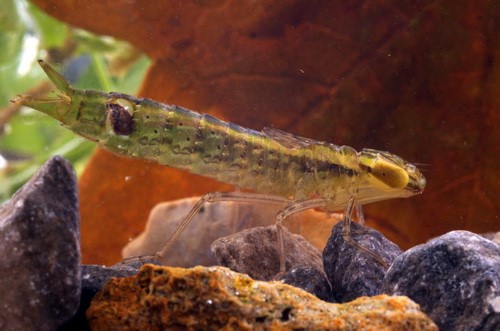


A dragonfly nymph's special mouthpart is referred to as a "killer lip." Here, a nymph nabs a fly that was floating at the surface. With their labium, nymphs can catch mosquito larvae, worms and even small fish and tadpoles. “It’s like a built-in spear gun,” said Kathy Biggs, the author of guides to the dragonflies of California and the Greater Southwest. Only dragonfly and damselfly nymphs have this special mouthpart. Instead, dragonfly nymphs have to fend for themselves to keep up their carnivorous diet.Ī nymph’s eyesight is almost as precise as an adult dragonfly’s and when they spot something they want to eat, they extrude this mouthpart, called a labium, to engulf, grab, or impale their next meal and draw it back to their mouth. Unlike butterflies, which also have distinct life stages, dragonflies’ transformation into adults doesn’t require a period of dormancy during which a pupa lives off the protein it stored as a caterpillar. “And the adult stage is all about dispersal and reproduction.” “The larval stage is all about growth,” said Joan Ball-Damerow, a fellow at the Field Museum in Chicago who has surveyed dragonflies in California. As it turns out, dragonflies spend most of their lives as aquatic insects crawling around the bottom of ponds or streams. (Josh Cassidy/KQED)ĭragonfly and damselfly babies, also known as larvae or nymphs, spend months or years underwater growing to a couple of inches long and developing wings on their backs. A dragonfly nymph catches a mosquito larva with a special mouthpart it shoots out, Alien-style, at lightning speed. It’s like a long, hinged arm that they keep folded under their head and it’s eerily similar to the snapping tongue-like protuberance the monster shoots out in the "Alien" sci-fi movies. Instead, they have a mouthpart that they shoot out. If adult dragonflies are known to be precise hunters, capable of turning on a dime and using their almost-360-degree vision to nab mosquitoes and flies in midair, their dragon-looking babies are even more fearsome.Īnd they do it without the benefit of wings. What most amateur odonatologists have probably never seen is what happens after those eggs hatch underwater. While developing their versatile four wings, dragonflies spend months, even years, underwater as larvae. (Josh Cassidy/KQED) A flame skimmer dragonfly sits on a branch in Sebastopol. A blue dasher pushes a cardinal meadowhawk dragonfly off a flower in Sebastopol, California. Or a blue female damselfly, wings held tightly alongside her torso, dipping the tip of her abdomen beneath a water clover to lay her eggs.

In California, they might spot a pair of bright-red flame skimmers flying around, attached to each other in a mating dance. Others watch dragonflies.įor amateur odonatologists, as dragonfly enthusiasts are called, the summer and fall bring a bonanza. While all of them aren't considered dangerous to humans unless you provoke them, a couple can have a negative impact on the environment.Some people watch birds. The Department recently shared a graphic on its Facebook page comparing the sizes of four other hornet species to the Northern Giant Hornet to help residents decide how concerned they should be. Indiana has its share too, which is why the Department of Natural Resources (DNR) is giving residents a heads-up on the different types you might see and what you should do if you find them. The biggest concern with these scary-looking insects at the time was their impact on the already thin honey bee population, which is a crucial part of our ecosystem. The good news is, thanks to the quick action of officials in Washington state, no murder hornets have been spotted in that area, or anywhere else, in over a year (Yay!). But, they're not the only species out there, of course. While their sting can pack a punch to humans in terms of the amount of pain it causes, it's rare for anyone to die from its sting. Remember when Murder Hornets were a thing? Known by entomologists as the Asian Giant or Northern Giant hornet, they were spotted in Washington state in May of 2020 when everyone was already at their wits end thanks to the COVID pandemic.


 0 kommentar(er)
0 kommentar(er)
